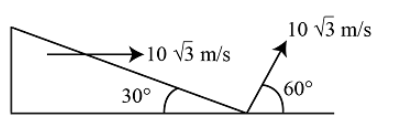A
B
C
D
Text Solution
Verified by Experts
The correct Answer is:
|
Topper's Solved these Questions
DAILY PRACTICE PROBLEM
RESONANCE|Exercise DPP No.23|20 VideosView PlaylistDAILY PRACTICE PROBLEM
RESONANCE|Exercise DPP No.24|9 VideosView PlaylistDAILY PRACTICE PROBLEM
RESONANCE|Exercise DPP No.21|20 VideosView PlaylistCURRENT ELECTRICITY
RESONANCE|Exercise High Level Problems (HIP)|21 VideosView PlaylistELECTRO MAGNETIC WAVES
RESONANCE|Exercise Exercise 3|27 VideosView Playlist
Similar Questions
Explore conceptually related problems
Knowledge Check
Similar Questions
Explore conceptually related problems
RESONANCE-DAILY PRACTICE PROBLEM-DPP No.22
- A particle is projected at an angle 60^@ with speed 10(sqrt3)m//s, fro...
05:11
|
Playing Now - A particle moves in one dimension in a conservation force field. The p...
04:10
|
Play - A plank of mass M is placed on a rough horizontal surface. A man m wal...
05:55
|
Play - Three identical rigid circular cylinder A B and C are arrenged on smoo...
10:44
|
Play - A force F = 20 N is applied to a block (at rest) as shown in figure. A...
08:03
|
Play - A 20 kg block B is suspended from a cord attached to a 40 kg cart A. T...
Text Solution
|
Play - In a mixture of H- He^(+) gas (He+ is singly ionized He atom), H atom ...
10:08
|
Play - In a mixture of H- He^(+) gas (He+ is singly ionized He atom), H atom ...
10:08
|
Play - In a mixture of H- He^(+) gas (He+ is singly ionized He atom), H atom ...
10:08
|
Play

